Expanding the brain achieves super-resolution with ordinary confocal microscopes
January 16, 2015
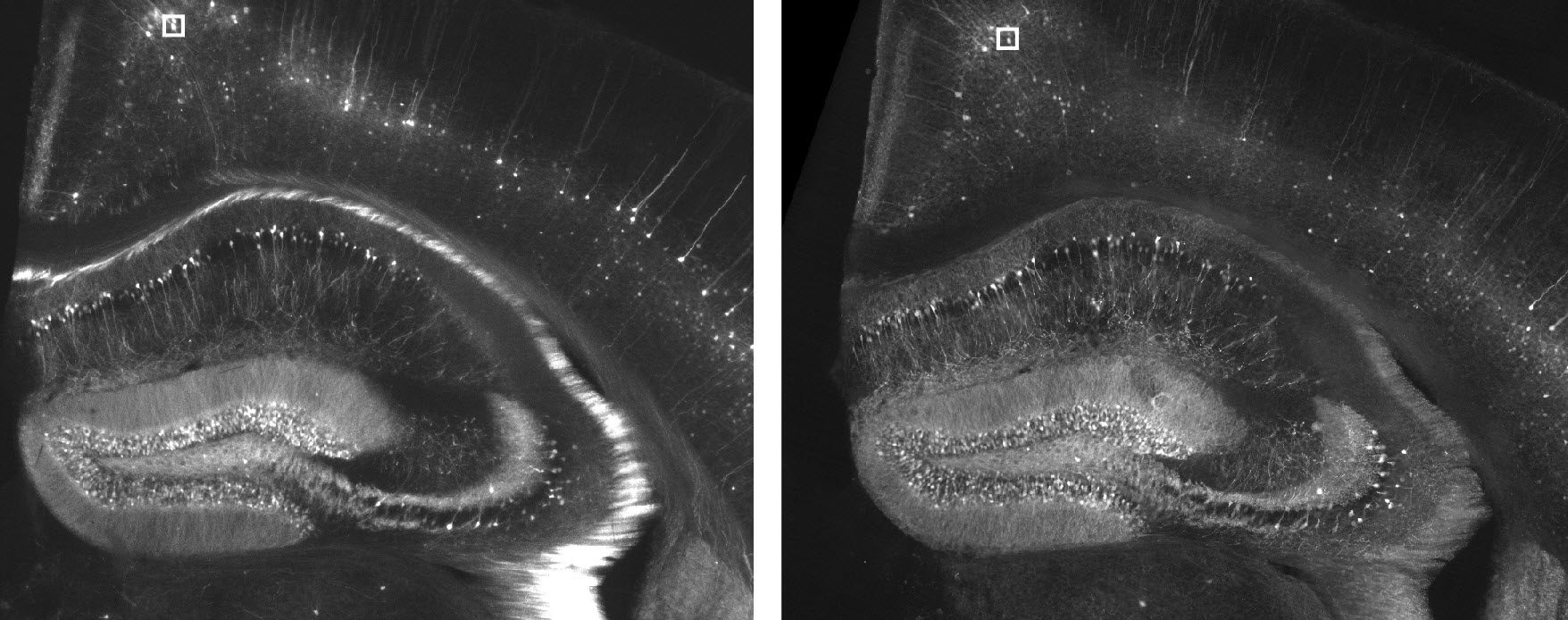
Expansion microscopy enables researchers to resolve details down to about 70 nanometers in this enlarged hippocampus brain segment (right), compared to about 300 nanometers without expansion (left), the previous limit with a conventional microscope (credit: Ed Boyden, Fei Chen, Paul Tillberg)
Engineers at the MIT-based Center for Brains, Minds and Machines have developed a way to make a brain expand to about four and a half times its usual size, allowing nanoscale structures to appear sharp with an ordinary confocal microscope.
The new “expansion microscopy” technique uses an expandable polymer and water to enable researchers to achieve “super-resolution” to resolve details down to about 70 nanometers laterally, compared to about 300 nanometers (violet light), the previous limit with a diffraction-limited conventional microscope, and without the slower performance of existing “super-resolution” microscopes.
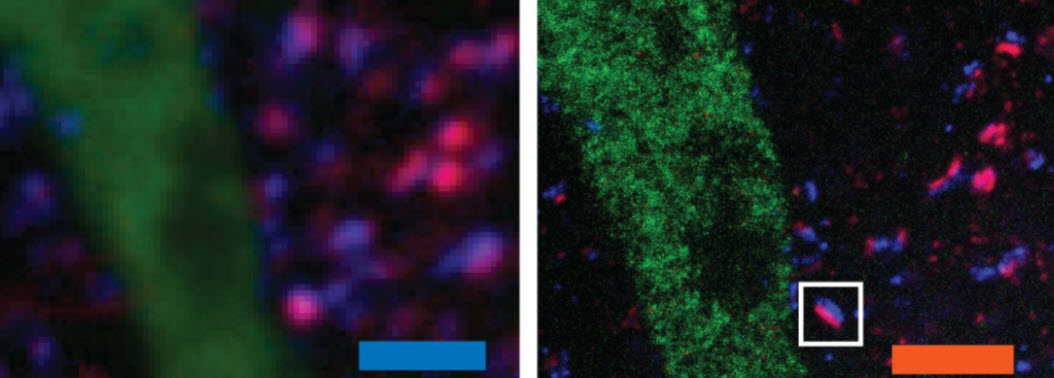
How expansion microscopy works: The two tiny boxes in the image at the top of this page are enlarged in this excerpted image. Expansion microscopy converts the fuzzy confocal fluorescence image on the left into the detailed image on the right (scale bars: 2.5 micrometers). A synapse (shown as a pink circle at the bottom on the left) is about .6 micrometers (600 nanometers) in width. The expansion allows for seeing details of the synapse (in white box on the right). (Credit: Ed Boyden, Fei Chen, Paul Tillberg)
The MIT engineers who developed the technique, Fei Chen, Paul Tillberg and Edward Boyden, assert it offers the ability to use conventional microscopes to image large, intact, 3D brain structures with nanoscale precision for the first time.
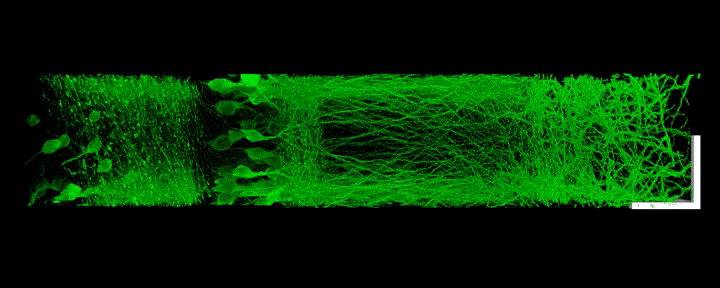
Shown here is a 3D image of mouse brain tissue taken using super-resolution microscopy, a technique that uses fluorescent molecules to resolve tiny brain details of a portion of the hippocampus, showing neurons (green)and synapses (blue and red) (credit: Ed Boyden, Fei Chen, Paul Tillberg)
“Expansion microscopy may provide a key tool for comprehensive, precise, circuit-wide, brain mapping,” Boyden said. The team has demonstrated the process on mouse, fruit fly, and zebrafish brains and is working with another team to apply it to human tissue.
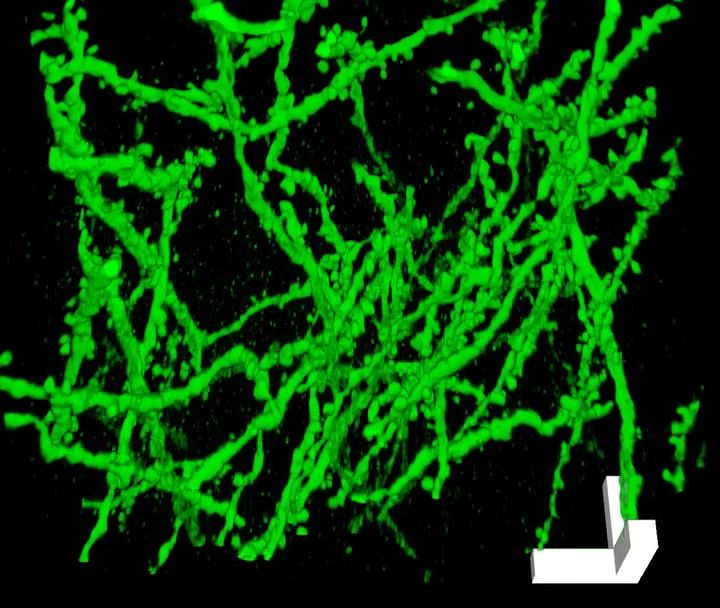
Dendrites, treelike extensions of the neuron cell body, are the primary sites for receiving and integrating information from other neurons. This 3D animation of dendrites in a mouse brain was taken using super-resolution imaging. (Credit: Ed Boyden, Fei Chen, Paul Tillberg)
Boyden adds that the process may be useful beyond the brain to other parts of the body. Many types of biological processes involve nanoscale interactions across large systems, such as cancer metastasis and immunological responses.
“This clever technique, which bypasses the limitations of traditional techniques for brain imaging, has the potential to be a powerful new tool to help researchers map and understand the brain,” said Pramod Khargonekar, NSF assistant director for the Engineering Directorate, which supports an array of neuroengineering projects.
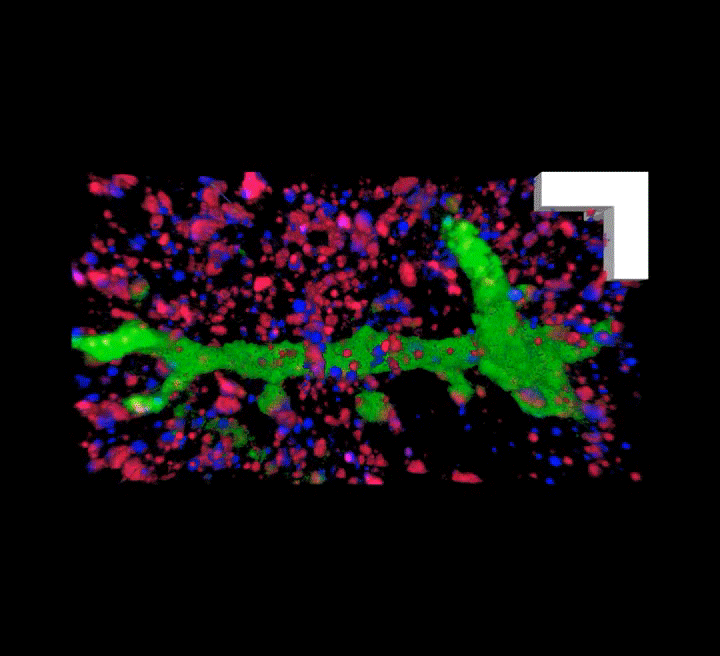
Another 3D animation of dendrites in a mouse brain, taken using super-resolution microscopy. (Credit: Ed Boyden, Fei Chen, Paul Tillberg)
The new method is another advance in brain imaging that brings researchers closer to illuminating the entire brain and nervous system, one of today’s greatest engineering challenges. Development of expansion microscopy was detailed in the Jan. 15 issue of Science.
The Center for Brains, Minds and Machines is an NSF science and technology center funded in 2013 as part of NSF’s continuing support for the advancement of fundamental brain research.
UPDATE Jan. 17: Added “How expansion microscopy works” image.
Abstract of Expansion microscopy
In optical microscopy, fine structural details are resolved by using refraction to magnify images of a specimen. We discovered that, by synthesizing a swellable polymer network within a specimen, it can be physically expanded, resulting in physical magnification. By covalently anchoring specific labels located within the specimen directly to the polymer network, labels spaced closer than the optical diffraction limit can be isotropically separated and optically resolved, a process we call expansion microscopy (ExM). Thus, this process can be used to perform scalable super-resolution microscopy with diffraction-limited microscopes. We demonstrate ExM with apparent ~70 nm lateral resolution in both cultured cells and brain tissue, performing three-color super-resolution imaging of ~107 μm3 of the mouse hippocampus with a conventional confocal microscope.